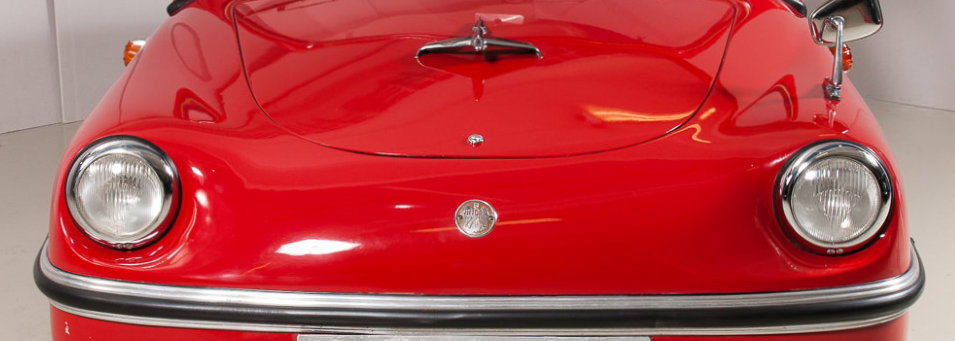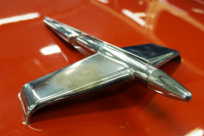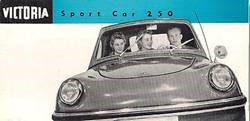
















Bayerische Autowerke GmbH (BAG), Nürnberg – Traunreut

Victoria Spatz 250 - 57
The Spatz (German for sparrow), later renamed the
Victoria 250, is a four-wheeled microcar that was built
between 1956 and 1958.
The car was originally conceived by Egon Brütsch as the Brütsch 200 "Spatz" a Fiberglass three-wheeler with the suspension of the front wheels and the rear wheel attached directly
three-wheeler with the suspension of the front wheels and the rear wheel attached directly to the body shell. As such the car proved engineeringly unsound and trial runs on rough roads
led to severe cracks in the bodywork.
Harald Friedrich, managing partner of Alzmetall P. Meier & Friedrich GmbH in Altenmarkt an
to the body shell. As such the car proved engineeringly unsound and trial runs on rough roads
led to severe cracks in the bodywork.
Harald Friedrich, managing partner of Alzmetall P. Meier & Friedrich GmbH in Altenmarkt an der Alz, acquired the license from Brütsch to build the "Spatz" (German for sparrow) and in
der Alz, acquired the license from Brütsch to build the "Spatz" (German for sparrow) and in July 1956 with the Victoria works as a partner, founded the Bayerische Autowerke GmbH
July 1956 with the Victoria works as a partner, founded the Bayerische Autowerke GmbH (BAG).
(BAG). Because of the deficiencies in the original design, Frederick asked the then 77-year-old Hans
Because of the deficiencies in the original design, Frederick asked the then 77-year-old Hans Ledwinka, the former Tatra engineer, to design a robust chassis for the car. The result was a
Ledwinka, the former Tatra engineer, to design a robust chassis for the car. The result was a central tube frame and four wheels – in contrast to the original three-wheeled Brütsch.
central tube frame and four wheels – in contrast to the original three-wheeled Brütsch. Frederick then saw himself no longer obligated to pay royalties to Brütsch, which led to a
Frederick then saw himself no longer obligated to pay royalties to Brütsch, which led to a court case, which Frederick won. The judges recognising that the original Brütsch
court case, which Frederick won. The judges recognising that the original Brütsch construction was both useless and dangerous.
The fiberglass bodywork resembled a sports car, but with only 10 hp (7 kW) was too
construction was both useless and dangerous.
The fiberglass bodywork resembled a sports car, but with only 10 hp (7 kW) was too underpowered to qualify as such, no matter how light it was. The cloth top was erected from
inside the car. Reverse was, like for the Messerschmitt KR200, by running the engine
underpowered to qualify as such, no matter how light it was. The cloth top was erected from
inside the car. Reverse was, like for the Messerschmitt KR200, by running the engine backward (or by physically picking it up). The car was mechanically similar to the KR200 but
backward (or by physically picking it up). The car was mechanically similar to the KR200 but with a single bench seat for two of three people sitting beside each other.
The engine size was increased from 200 to 250 cc. They were known for burning up. 1,588
with a single bench seat for two of three people sitting beside each other.
The engine size was increased from 200 to 250 cc. They were known for burning up. 1,588 were built between 1956 and 1958, 859 as "Spatz", 729 as "Victoria 250".
were built between 1956 and 1958, 859 as "Spatz", 729 as "Victoria 250".

1957
 Engine
250 cc
2 cylinders
Power
10 HP
Engine
250 cc
2 cylinders
Power
10 HP
 Total of 1.588 Victorias were build
from 1956 to 1958. The collections
item is in original, mint condition.
Total of 1.588 Victorias were build
from 1956 to 1958. The collections
item is in original, mint condition.


Photos mainly by Matti Kreivilä. Historical facts and technical details of the vehicles provided by Wikipedia. Movies YouTube.












